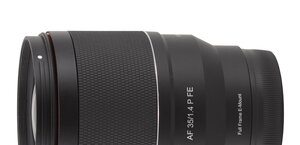Tokina AT-X 124 PRO DX II AF 12-24 mm f/4
3. Build quality
The tested lens starts with a metal bayonet mount. Inside, we’ll find a distinctly convex rear element which, at 12 mm focal length, is almost at the same level as the mount. On passing to 24 mm it hides a bit over 2 cm into the barrel. The situation is different in the case of the front elements system. The front is the most extended at the ends of the focal length range and the most folded inside the barrel at about f/16. The movement is very slight, though, as it covers the distance of just several millimeters.
Please Support UsIf you enjoy our reviews and articles, and you want us to continue our work please, support our website by donating through PayPal. The funds are going to be used for paying our editorial team, renting servers, and equipping our testing studio; only that way we will be able to continue providing you interesting content for free. |
- - - - - - - - - - - - - - - - - - - - - - - - - - - - - - - - - - - - - - - - - - - - - - - -
After the mount, already on the lens’s barrel, there is a ribbed zoom ring. It is 21 mm wide, works smoothly and is well-damped throughout the whole range. Next, we see a distance scale window. The scale, expressed in feet and meters, is very clear and legible.
After that we meet a wide, comfortable manual focus ring. If you want to change the mode from AF to MF you have to shift the ring in the direction of the mount. As I’ve already mentioned it several times, I am not fond of this solution; the movement of the ring often causes the movement and change of the focus. Apart of this flaw the ring is difficult to flaw. It is comfortable well-damped and moves smoothly so the work with it is very convenient. Running through the whole distance scale demands a 90-degree turn of the ring.
The lens ends with a non-rotating filter thread, 77 mm in diameter, which surrounds the front element with a diameter of almost 5 centimeters.
When it comes to the inner construction, the lens consists of 13 elements in 11 groups. Two elements are aspherical and two others are made of low-dispersion SD glass. All of this is complemented by an aperture with nine diaphragm blades, which can be closed down to f/22.

The buyer gets both caps and a petal-type lens hood included in box.






